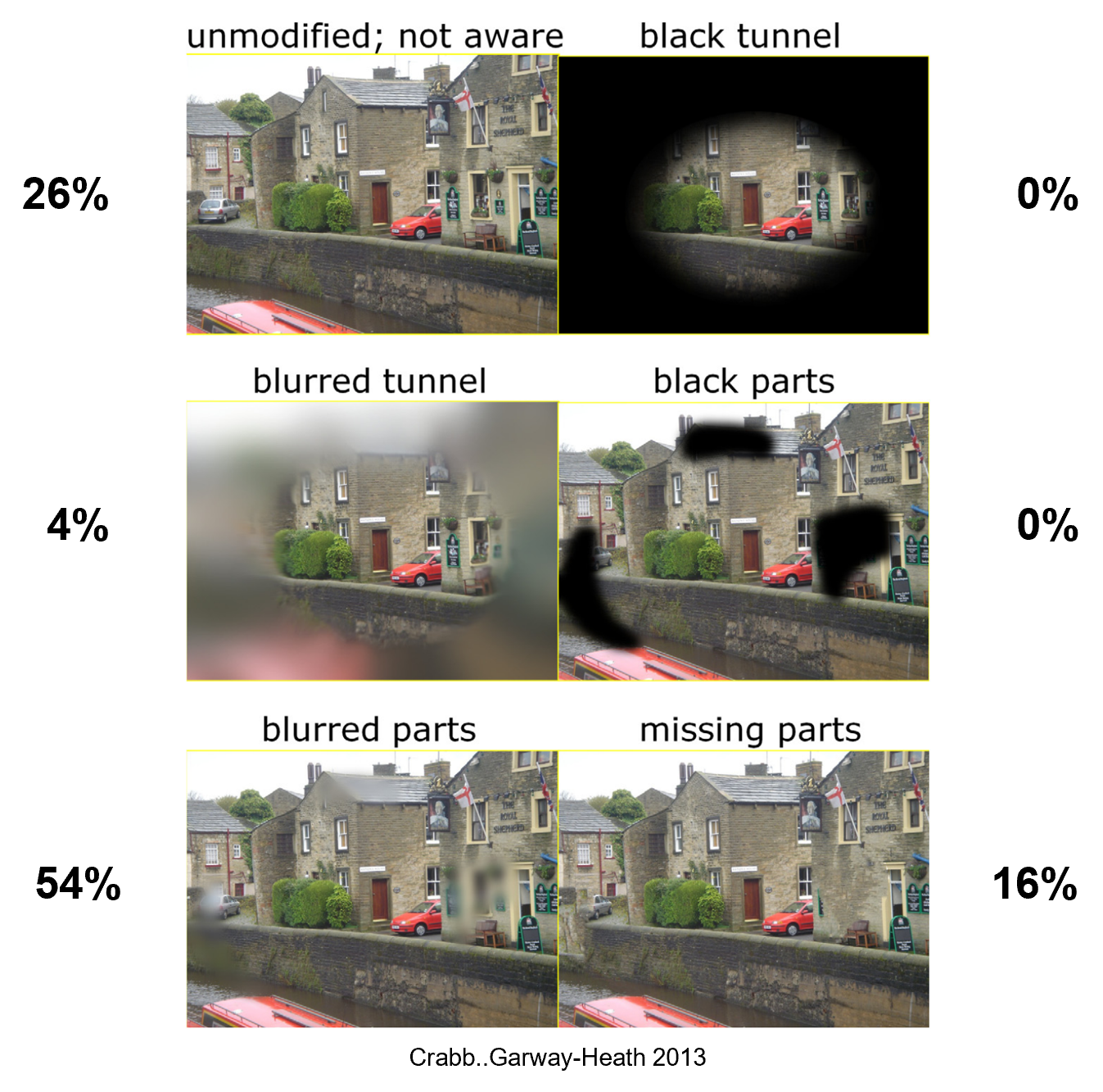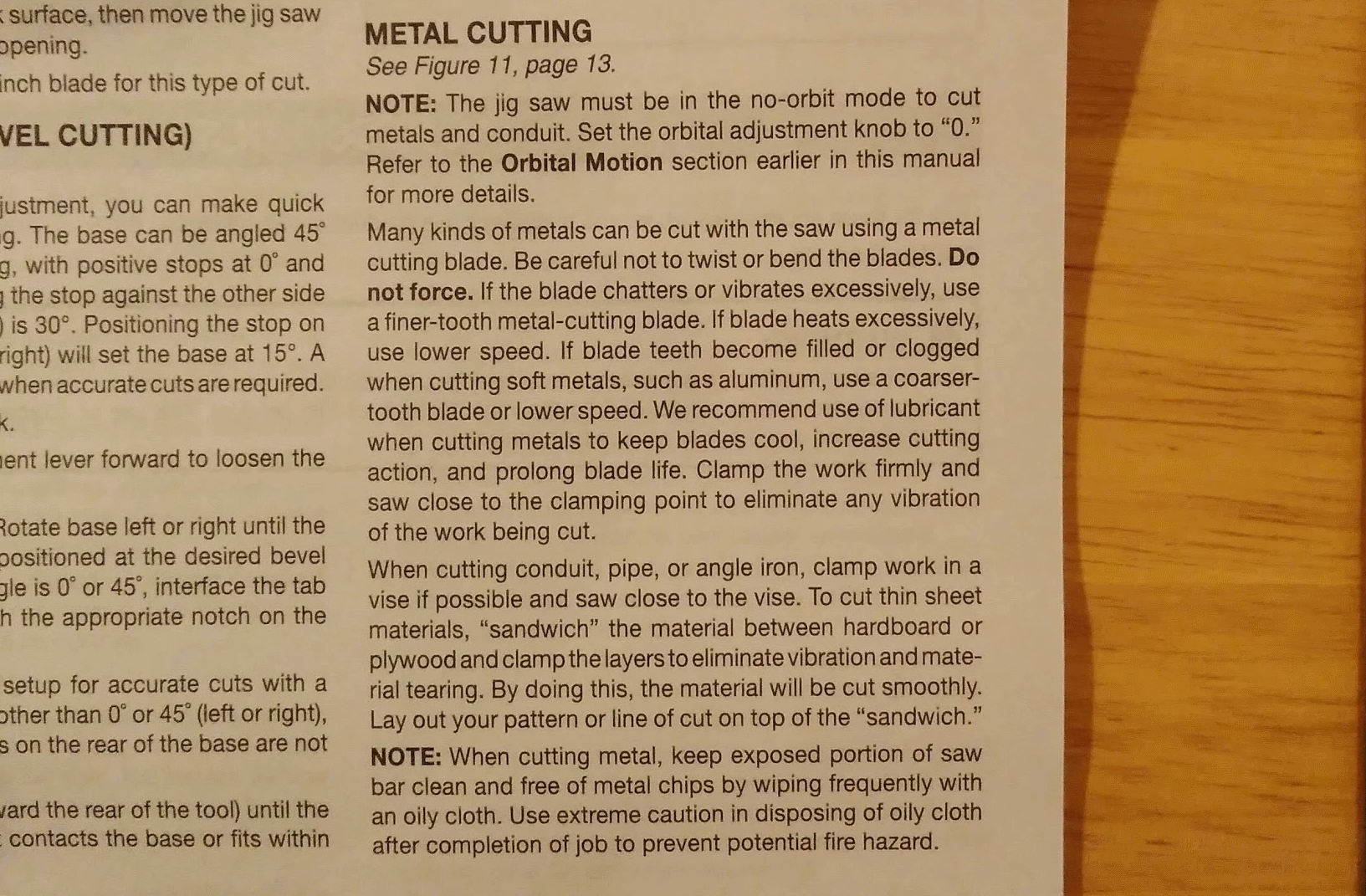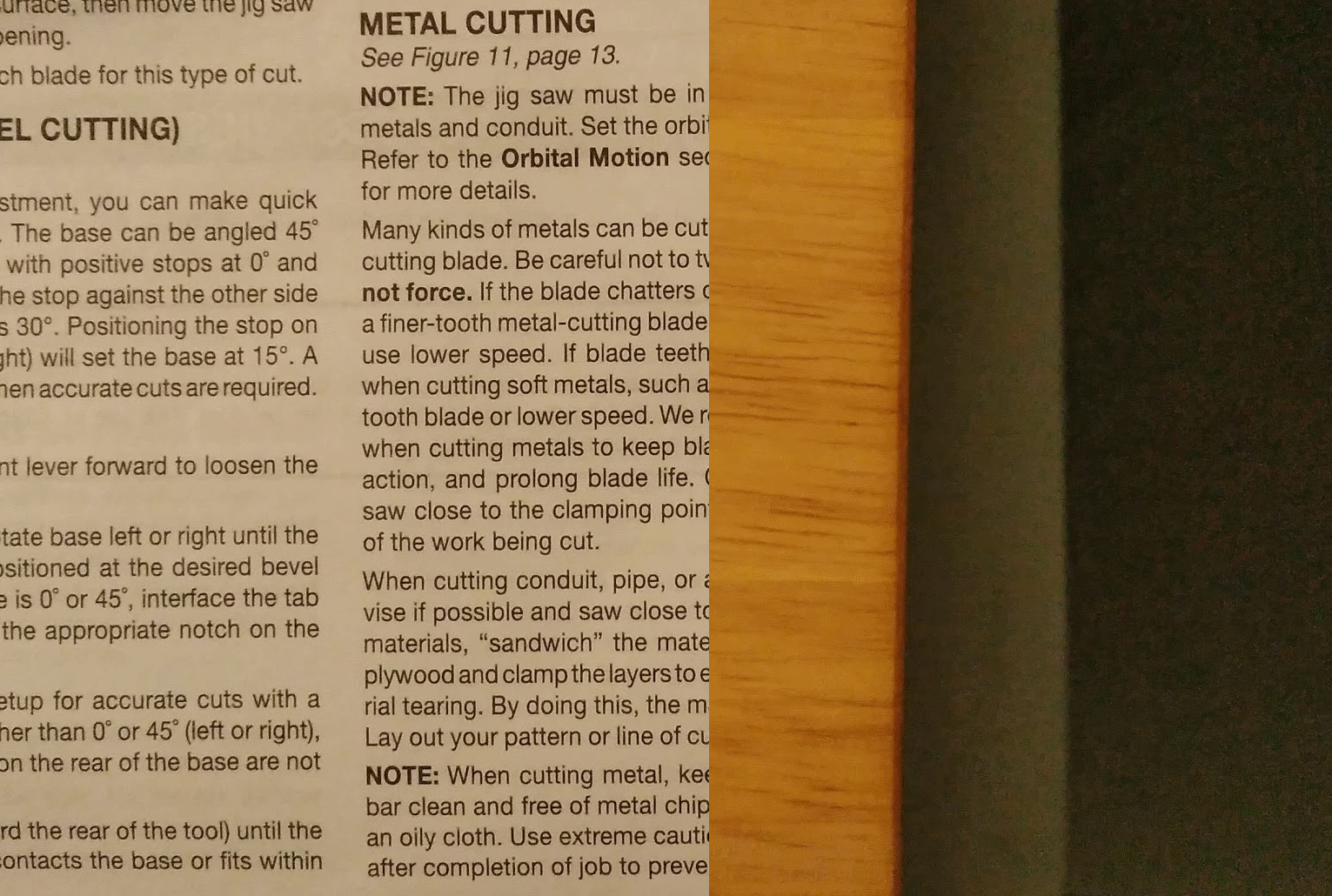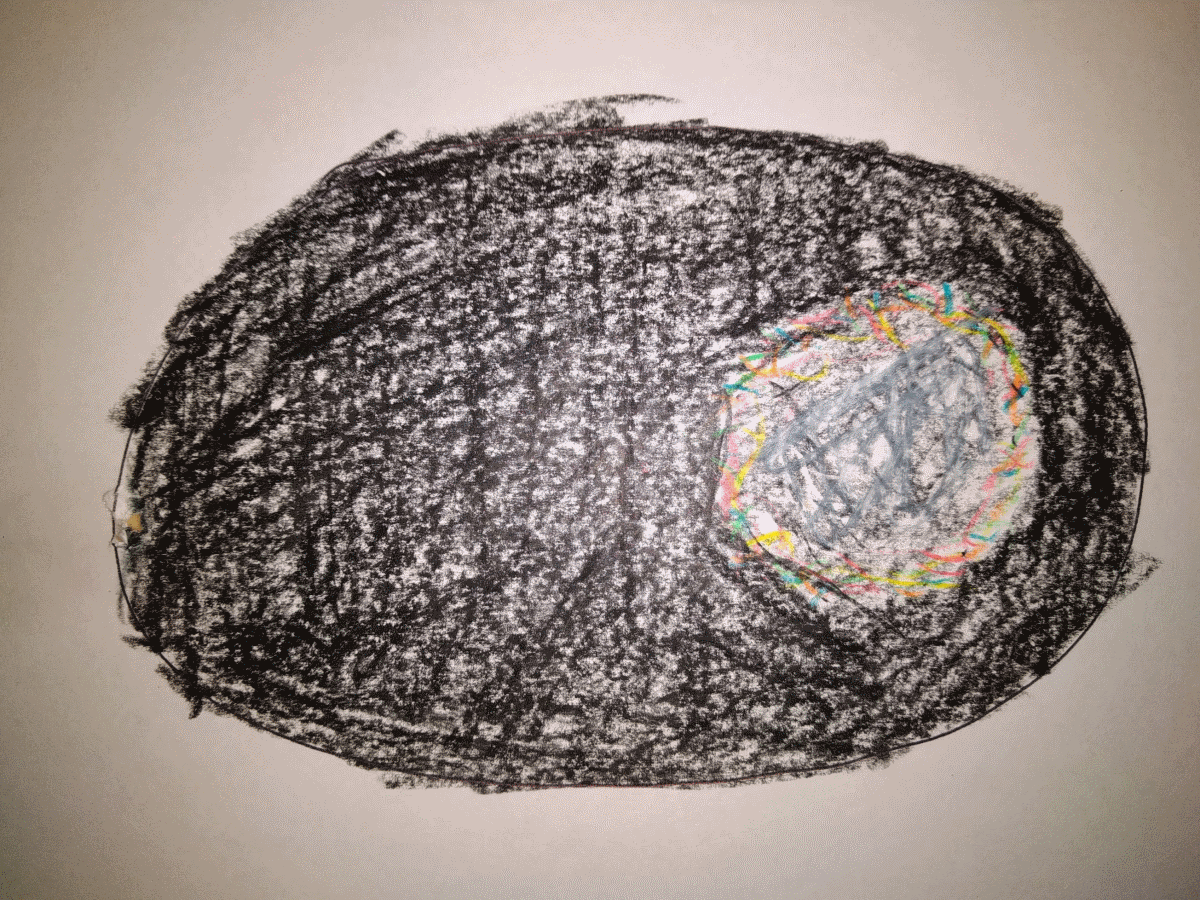My experience of a temporary scotoma (blind spot)
Aug 27, 2020, 9:21a - Consciousness
Last December I had a once-in-a-lifetime experience. It was quite serendipitous too, because I have been thinking about this medical condition and researching it for the past 5 years... So here goes.
Before I jump in and say what happened to me, I want to give a bit of background. It has been known for at least 150 years if not longer that damage to primary visual cortex in the brain (abbreviated "V1") can cause blindness. Now, this is different from your run-of-the-mill blindness, which is usually caused by some damage to the eye itself, such as macular degeneration, glaucoma or cataracts. After cortical damage the patient's eyes are more-or-less OK, but it's where the eyes connect to, visual cortex in the brain, which has been damaged. So the singer is still singing, but no one is hearing her. Hence, blindness.
Now, there is a map of the retina (the light-sensing tissue in the eye) in the visual cortex. What is interesting is if you have damage to just part of the visual cortex instead of all of visual cortex, you will only lose vision in part of your visual field (i.e. what you see around you). For example, if you have a gunshot wound or stroke to left visual cortex (on the left back side of your head), you will lose vision only to the right of where you look, not across your entire visual field. This is because the parts of the retina that receive light from the right visual field send their signals to the left visual cortex (by way of the thalamus).
Now, there is a bit of a question as to what you actually see in that blind area, called a "scotoma" or "hemianopia", to your right. Does it go black, so you see a big black hole? Does it appear fuzzy, like bad eyesight? Or do you not even see it at all? One way to think about answering this question is to think about our eye's natural blind spot, which every person normally has. If you close one eye and move your thumb around at arms length in front of the open eye, you can actually see the tip of your thumb, including your thumbnail, disappear! Does the same thing happen to a scotoma caused by brain damage?
In one study (pictured below), researchers asked people with scotomas what part of the visual field with the scotoma looked like to them by showing several different possible images to their good visual field and having the patients pick one. Interestingly, no one reported seeing big black holes. Instead, most reported that the areas with damage looked blurry, and if not blurry then that parts were missing or that they couldn't even notice anything as wrong. The latter two experiences are exactly what happens in our natural blind spots.

Fraction of patients with scotomas reporting on what the scotoma looks like
That's the end of the background - now to my personal experience.
Last December around Christmas, I went to replace the batteries in my son's aquarium nightlight (a gift from Kostas and Angeliki). After putting the batteries in, unexpectedly it turned on and projected a very bright light into my eyes so that I was temporarily blinded as my eyes adapted to the light. I didn't think anything of it at the time except that it was mildly uncomfortable. After giving the nightlight to Becca I went back to my room to read an instruction manual (see pic below). Amazingly, I could not read. I could see everything fine to the left of where I was trying to read, but I couldn't see any letters to the right. So I couldn't read. Now, I didn't lose my whole right field, because I could still see things to the far right of my visual field. If I moved my eyes, the scotoma remained in the same relative-to-my-center-of-gaze position.

Normal vision, with gaze centered on center of pic

This is how the same scene looked with my scotoma. With my gaze in the center, I could no longer see any letters to the right so I could not read. Instead, the edge of the table and beyond came into the field of view where the letters should have been. It was as if the field was stitched across my scotoma.
If I rememeber right, when I closed either eye, the problem persisted, suggesting that this was a problem with my visual cortex rather than a problem with one eye itself. I do feel like the triggering bright light was seen in the right portion of my visual field, so somehow that bright light triggered a persistent blindness! I was a bit scared, but I decided to observe the effect more, as scotomas are part of what I have been researching at UCSF and UC Berkeley for the past 3 years using mice. So why not take this stroke of luck and learn from it, was what I was thinking.
I put my fist at arm's length to try to map the extent of my scotoma along the horizon. I could see my hand when it was close the the center of my gaze, but the moment it went into the right field it disappeared, until it reappeared again at about 30 degrees away from the center of my vision. I didn't map the scotoma's height extensively, but my impression was that it was equally large in height.
One oddity was that when I closed my eyes, I could see some sort of sparkling or rainbow Moire effect where my scotoma was. The colors were most visible along the edges of the scotoma and less so along its central portion (see pic below). I was surprised by the fact that I could clearly see the borders of the scotoma when I closed my eyes, yet when I opened them I had to do the hand test to define the scotoma's location. I wonder if people with permanent brain damage also see the scotoma border with their eyes closed. Also interesting was that with my eyes closed I could see the scotoma growing in size, until it nearly doubled or quadrupled in area. When I opened my eyes and did the hand test, the scotoma now encompassed from my central gaze to 45-60 degrees to my right. It then stopped growing and persisted for some minutes, during which I went to sit in a dimly lit room. I drank some water and started getting a slight headache and feeling nauseous, all signs of a migraine. I had never had a migraine before in my entire life.

Dark oval is my field of view with eyes closed. You can see the scintillating colors around the perimeter of the scotoma. The center was more black and white snow noise, just slightly higher contrast than my full field of darkness. I often seen this visual noise when I am drunk. Note that the scotoma was not actually perfectly circular as drawn here, but irregularly shaped.
After about 30 minutes the scotoma went away and the slight headache and nausea started. Then after about an hour those feelings also subsided, and I was as good as new.
So that was very interesting. If it happens again (could I induce it again with a bright light?), I will test myself for blindsight with Becca's help.
Read comments (10) - Comment
Poonam
- Aug 27, 2020, 10:34p
Very interesting. When you explained your new experiment to me you didn't share your personal experience. I am not surprised. It is a very keen observation on your part and a fascinating study of the visual cortex if you pursue it further.
It also reminded me of the old camaras that would blind you for a bit with their flash...although,I did not pay attention to what I saw after I was blinded and for how long.
Anyway sounds like a good experiment but please don't try it in yourself again...you have your mice for that.
Good luck!
Bharti
- Aug 31, 2020, 11:13a
Very interesting. This explains the feeling that at times I was oblivious to my surroundings. Good luck with your research and would be very interested in your findings
Ed
- Sep 1, 2020, 5:38a
Great to see this blog still kicking! I've been coming here for the past decade (mostly for the wormweb.org).
Elon
- Jul 3, 2021, 4:23a
Interesting blog mate, please consider to apply for neuralink , just checked your amazing track record on linkedin.
Kat
- Dec 11, 2022, 6:07p
I have visual field lossloss. Yep totally just unaware I'm missing vision now infact I forget even seeing a driver next to tyou, in the car was normal 4 yrs ago! Mine is permanent I have a refractory error. When faced with light stare at sun close eyes I only get the orange dots in remaining vision areas never lost one's. Note cerebral hemmorage and infarct py.
Cardinal
- May 7, 2023, 12:22p
I've also experienced this once a couple years ago, A small region of my eyesight just kind of disabled itself and I see how my brain was filling in the gaps, using the surrounding vision to assume what should be there. It lasted around 30 minutes and then faded away.
Someone
- Jun 11, 2023, 3:00p
This is migraine aura
Thoro
- Dec 16, 2024, 7:28a
I got the blurry thing. Spots that are blurry and flicker when blinking.
Kenton
- Jan 17, 2025, 5:38p
That’s a migraine my friend. I get 1 or 2 a year, if that and have for 20 years. Your description is just like I’d would describe.
fnfOzvSR
- Nov 8, 2025, 10:00p
1
« A Follow-up on X, after 12 years
|